His range may have been a narrow one, but within its limits he was one of the most sincere painters this country has seen. He was the first who attempted with success to place nature upon canvas with pigments that faithfully matched her true, rich, and fresh colours. Her almost unceasing movement he rendered with a master-hand, so that his pictures are full of life, and one can almost hear the rush of the wind through the tree tops, or the lashing of the rain upon the leaves. He felt the majesty of the tempest and the thunder-cloud, and the beauty of the rainbow which signals the storm’s departure. “Sunshine and Shower” would serve admirably for the title of many of his works; for these were the effects he painted most constantly, and with the greatest truth and power.
While his contemporaries wooed the English public with facile pictures of spectacular battles and sentimental moments, John Constable (1776-1837 ) irritated them by drawing his inspiration not from history or literature but from nature itself, and by simply painting what he saw: clouds, canals, ponds, and heaths. His intention, which did not lack ego or hubris, was to paint in “God Almighty’s style”. Although he suffered from allegations of wanton obscurity and dimness, he achieved, in his manner, the theoretical impossibility of producing paintings in which superficially “nothing happens” , yet somehow the viewer remains glued to the canvas.
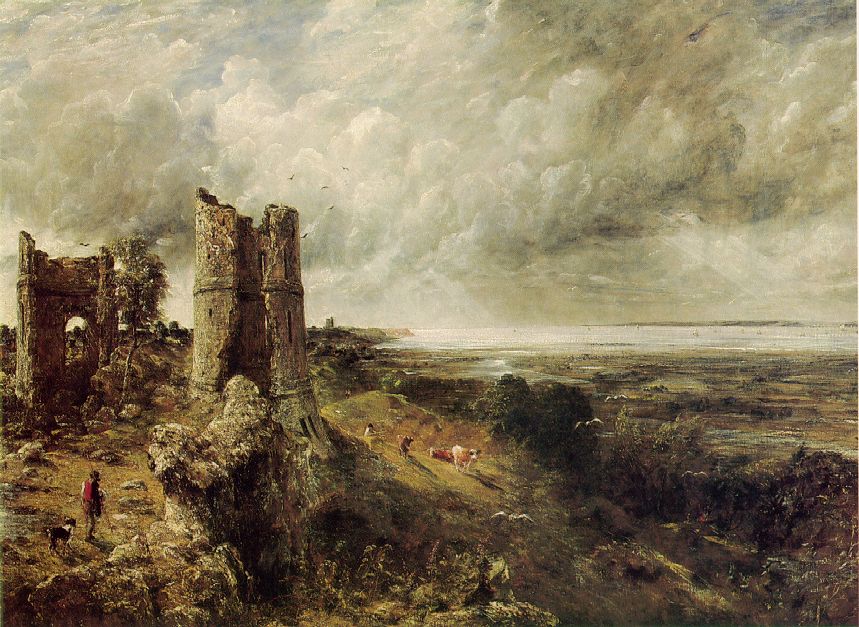
"The composition originated in a minute drawing Constable made on a visit to Hadleigh in 1814, but was not developed until around the time of his wife's death in 1828. As an image of loneliness and decay, the subject suited his desolate state of mind. The paint is savagely worked across the canvas, contributing to the picture's highly expressive mood." Hadleigh Castle.
As a miller’s son, John Constable was proud of having a miller’s weather eye, but it was not until the publication in 1820 of a book entitled “The Climate of London” that Constable, and indeed, all the writers and painters of the Romantic movement; discovered what might be called the meterological facts of life. Luke Howard, the author and the first modern weatherman, classified clouds into categories-cirrus, cumulus, and so forth- and gave a scientific basis to the atmospheric changes that painters had used for mood or simply as decoration.
While Shelly was writing “The Cloud” and Goethe was writing to Luke Howard himself, praising him for discovering in meterology “a symbol of the universal law,” Constable was out “skying,” recording the sky in all its moods. He worked fast, sketching on sheets of oiled paper in the lid of his paintbox, and in 1822 alone he executed more than fifty brilliant little pictures. “It will be difficult,” he said, ” to name a class of landscape in which the sky is not the keynote, the standard of scale, and the chief organ of sentiment…The sky is the source of light in nature, and governs everything.”
Having freed himself of the literary feelings that surrounded conventtional landscape painting, Constable now realized that an artist did not constantly need to seek fresh scenes: the mood, form, and tones of a single landscape were in a state of everlasting change and permutation because of the effect of light. Howard,s book helped him to explain things for which there had previously been no correct language, and now he was able to say in one of his lectures that landscape painting “is scientific as well as poetic;… imagination alone never did, and never can, produce works that are to stand by a comparison with realities”.
Constable’s sky sketches were made in Hampstead. In 1820, when he first went to live there, it was a large comfortable village, only a shilling coachride from London. “The Heath” , with its ponds and gravel works, was still very wild. His favorite sketching and painting spot was near Branch Hill pond. Foggy, noisy London lay below. It was while watching the effect of the clouds from these heights that Constable formed the corollary to his ideas about light: “I live by shadows,” he said. ” To me shadows are realities.” Hampstead Heath was to become an important personal landscape for Constable; but when his beloved wife Maria died in 1828, he chose none of these for his astonishing memorial to her.
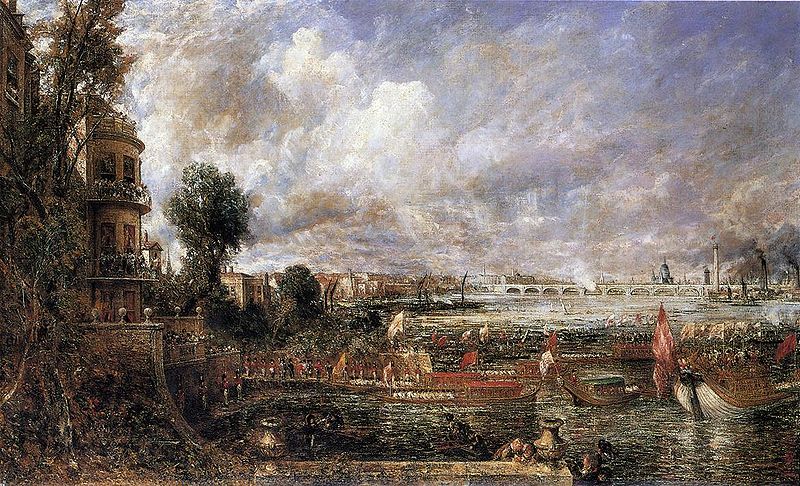
Waterloo bridge from Whitehall Stairs. "In this, the final version of the subject, the Lord Mayor's barge is now included on the right. The 'shot tower' is of course an anachronism for an event which occurred nine years before its construction. A parapet surmounted by urns appears in the foreground, acting as a repoussoir, or device for projecting the eye deep into the composition. Above the bridge Constable portrays a rare atmospheric condition which he described thus: 'when the spectator stands with his back to the sun, the rays may be seen converging…towards…the horizon'."
Many years earlier, during his frustrating courtship, Constable had discovered an ancient tower overlooking the Thames estuary at Hadleigh. He had never revisited the spot but now, his wife dead, he remembered it and how it had seemed to represent the futility of human endeavor. The majestic sketch he made for the picture of this castle, which he entitled “The Nore” , is overwhelming in its grief. One critic has said that nothing equals its sense of desolation except van Gogh’s last painting of empty fields. Although more than a century was to pass before the importance of the finished work was understood, the luminous “Hadleigh Castle” of 1829 marks one of those great and rare advances in the history of painting.
rc="/wp-content/uploads/2010/08/constable36-1024x738.jpg" alt="" width="614" height="443" />
In paintings for exhibit, it is true, Constable made have made concessions to popular taste; adding a hint of narrative, a touch of finish, or a nod to history. But in his oil sketches he was a daring experimenter. Seascape Study with Rain Clouds. 1824-25


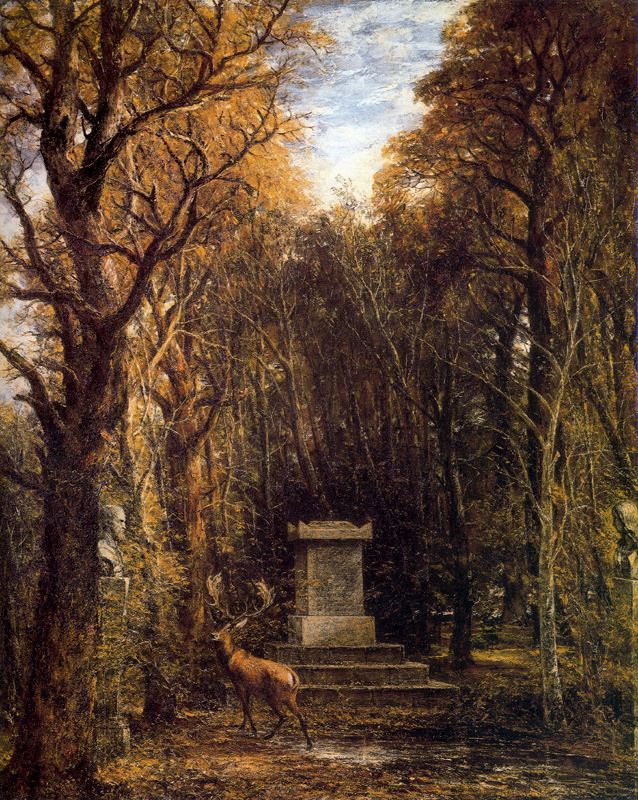


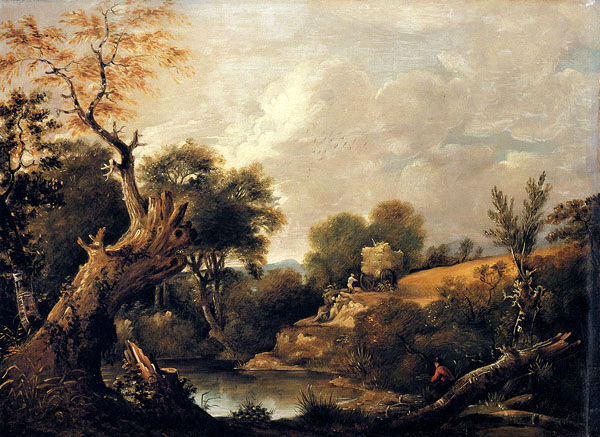
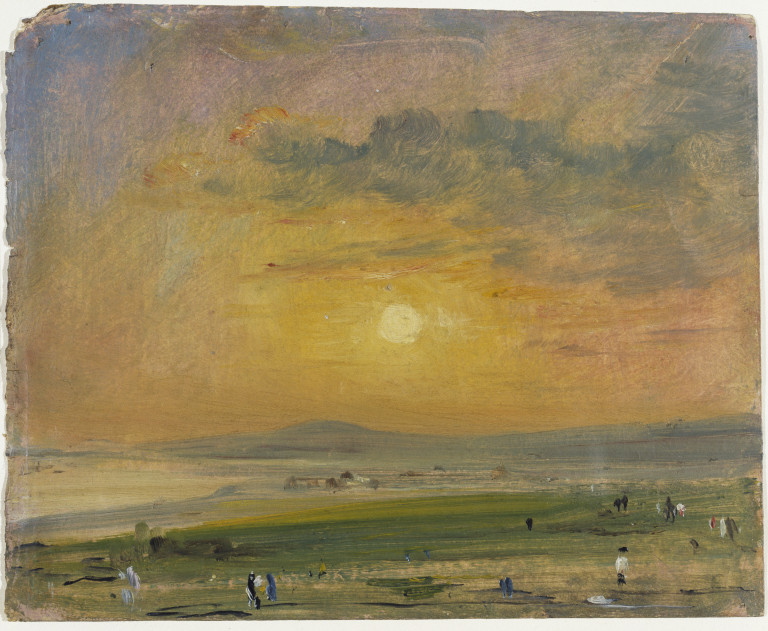
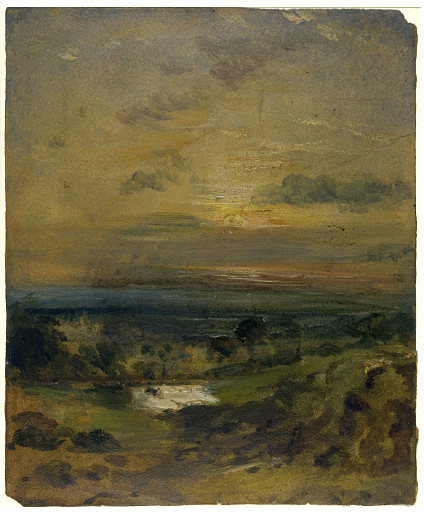
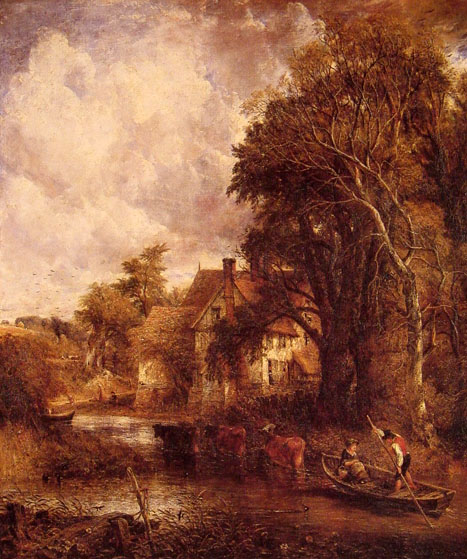




 COMMENTS
COMMENTS



